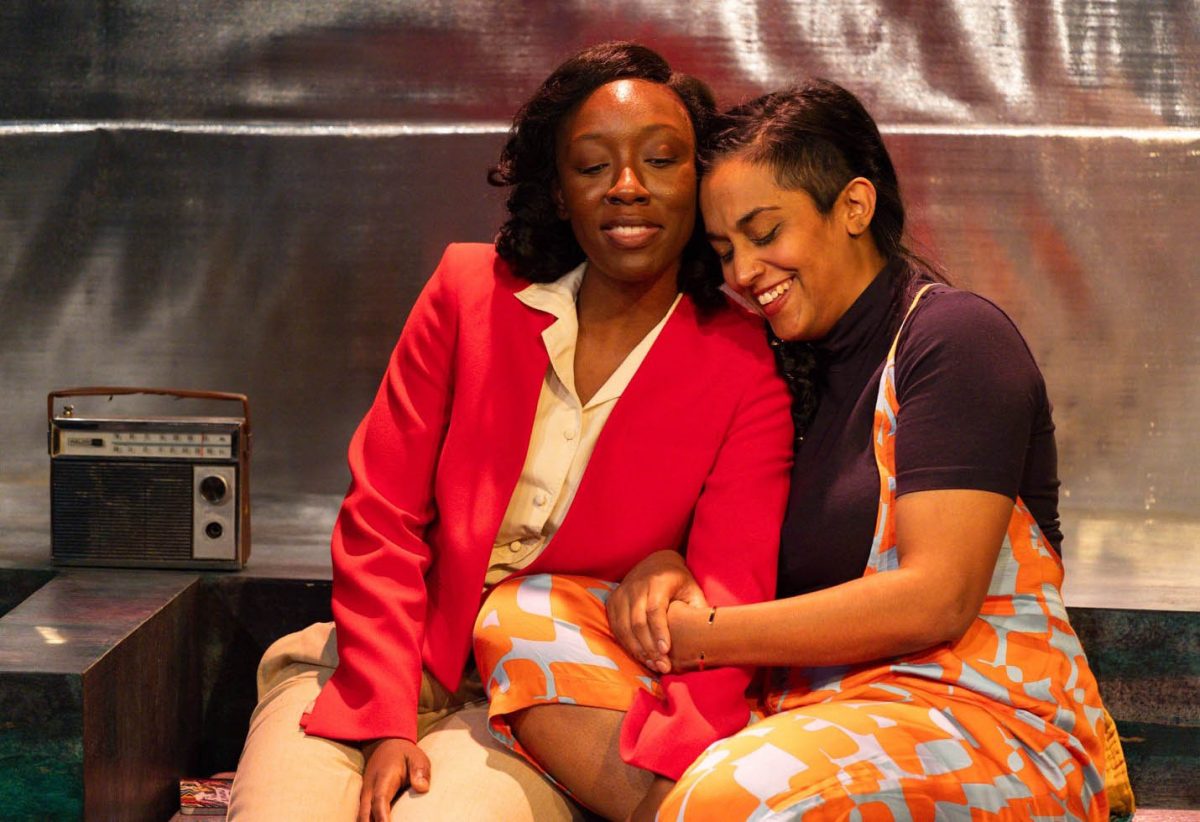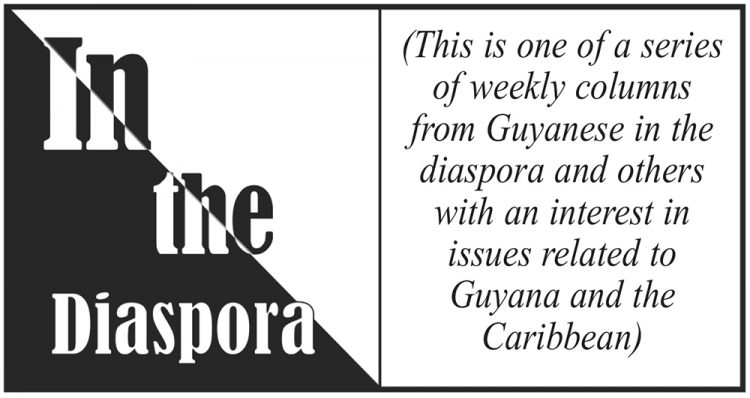Alissa Trotz is Editor of the In the Diaspora column
The Tarragon Theatre in Toronto, Canada, which describes its mission as one of offering a space “to create, develop and produce new plays to provide the conditions for new work to thrive,” is currently home to the world premiere of the deeply moving debut play, A Poem for Rabia, in co-production with Nightwood Theatre and Undercurrent Creations. I was fortunate to see it a few days before it opened, and to engage in a talkback with the immensely talented playwright, Guyanese-Canadian Nikki Shaffeeullah.
Born in Toronto to Guyanese parents, Nikki grew up connected to the Guyanese community in Canada. She is a self-described queer Indo-Guyanese artist committed to an abolitionist practice of dismantling systems that uphold state violence, like prisons and police. As someone historically connected to violent structures of forcible transport, surveillance and regulation, for Nikki abolitionism is a generational responsibility. It is also a responsibility that draws inspiration from ancestral refusal, building upon collective uprisings and earlier movements. An abolitionist politics is thus necessarily queer – it upsets the status quo, challenging hierarchies of race, gender, sexuality, class, caste and more. Abolitionism is joyous, insisting on sustaining – not exploitative and destructive – relations with others and with this planet. Abolitionism is also messy, refusing binary oppositions and easy answers and working things out in the process of transformation.
We see all this at work in A Poem for Rabia, which features a cast of six actors (four of whom play two characters). Programme notes describe the play as “An epic journey across time, oceans, and tectonic shifts in political history… [which]weaves the stories of three queer women from the same bloodline: Zahra, a disillusioned activist in 2053, navigating a Canada that has just abolished prisons; Betty, in 1953 British Guiana [a moment in the country’s political history when things could have gone in a direction different from the tragic turn that was taken], caught between her new secretarial job at the Governor’s office and the growing national independence movement; and Rabia, an Indian domestic worker in 1853, abducted by colonial ‘recruiters’ and sent sailing from Calcutta to the Caribbean on an indentured labour ship.”
Across two hundred years, and through the playwright’s own exploration of diasporic itineraries and embodied memories, we are invited to consider what it means to walk with one’s ancestor. This is necessarily complicated work that refuses purist interpretations or a singular search for origins. Instead there are all kinds of exquisite crossings in the play, and here the focus is not just on brutal transatlantic systems intended to control movements and insist on separation in the interest of global capital. Rather, in each of the three time periods, we witness delicate navigations of love and betrayal that disrupt social relations of caste, religion, race and sexuality.
Speculative fiction and Afrofuturism were important sources for Nikki as she explored what it meant to interact with an ancestor. Kindred, Octavia Butler’s novel that uses time travel to confront the unspeakable degradations of slavery and the insistent drumbeat of a resistant humanity that is the inheritance of the book’s African-American female protagonist, was an important inspiration. Nikki had also previously adapted for the stage Caribbean Canadian writer Nalo Hopkinson’s short story, Message in a Bottle, about an art curator who travels back to the present (her past) from her location (our future), which she directed at University of Toronto. In the 2053 setting of A Poem for Rabia, a future in which prisons have just been abolished, the journey to a time and space in which all our relations are non-punitive is ongoing; the world is neither clean nor perfect, neither idealized nor dystopic. As Nikki noted, “I hope that the play offers good questions, not answers because it is not meant to be prescriptive. That it encourages us to think imaginatively about who we are in this world and who we can be. To consider complicated things, with nuance in ways that are grounded in justice. To give us agency in this world to create and co-create.”
In terms of co-creation, it was important for Nikki to imagine a diverse, unruly collection of women and queer and trans folks at the centre of the work, feeling able to take ownership of the play, and to link this to organizing and communities in Guyana. Two weeks ago an evening was dedicated especially to the queer Guyanese and Caribbean communities. And last Sunday’s performance included a talkback with the playwright that featured artists, activists and descendants of indenture: Premika Leo and Kama La Mackerel, moderated by sociologist Cristine Khan, who is currently completing her doctoral work on the Indo-Guyanese diaspora across Toronto and New York City.
Accompanying A Poem for Rabia is an exhibit in the Tarragon lobby made possible through a community arts program led by Undercurrent Creations, Many Waters. Working with artists with a practice of community facilitation (Morgan Davis, Michelle Rambharose, and Roya DelSol), Nikki connected with queer Guyanese youth who participated in writing workshops to turn their stories into poetry, photography and visual art. The diaspora artists from Toronto whose work is featured are Guy Anabella, Shaharah Gaznabbi, Daniel Lyght, Chantele Sitaram and Bethany Sukhnanan. Working with Joel Simpson from SASOD Guyana, the exhibit was also able to feature the work of a Guyanese artist, Christina Izbaşa.
Co-creation – finding a language and practice of collaboration – was also central to the play’s unfolding. We close this week’s column with Nikki’s playwright note, reflecting on the process that has brought this important and beautiful script to the stage:
“Many years ago, a mentor encouraged me to make a play about Guyana. I tried, and I couldn’t. A place is a setting, not a story, I thought. And after all, I am from many places – where I was born (Toronto), where my parents and their parents and their parents and their parents were born (Guyana), and where most of my ancestors are from (India).
A few years later, I participated in an Arrivals Legacy Project workshop, in which artists explore the stories of one’s own ancestors. This set me on a path I have been on and off of for the past decade, a path that has taken many forms and has included archival research, conversations with family, workshops with community, trips to motherlands, and life-affirming explorations with fellow artists.
Throughout all of this, I was thinking about the symbiotic relationship between how we connect with ancestors, and how we build a better future. I thought about how some (all?) impossible-seeming goals have actually been done before, and about how writing can facilitate time travel. I made art in prisons and parks, and dreamed with friends about what a future without punishment could look like. I read a reflection by author Suzette Mayr where she says: “I tell you this story as truth about my ancestor even though it is 100 percent fiction.” I thought about how history repeats itself. I thought about how a series of places, when collaged together, can start to tell a story.
Like a person, a play is born from the collaboration of many people across time, space, and generations. I am grateful for the very many who have helped nurture A Poem for Rabia into existence.”
To learn more about the A Poem for Rabia, which is currently showing at Tarragon Theatre in Toronto until November 12, see https://tarragontheatre.com/plays/current-season/upcoming/a-poem-for-rabia/











